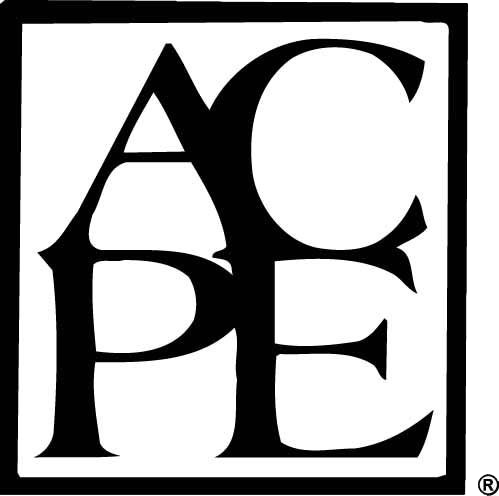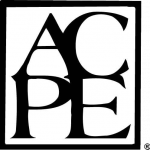A drug recall is a public notification of a product removed from the market due to a defective or harmful ingredient or label.1 Recalls are voluntary if initiated by the company or manufacturer. The United States (U.S.) Food and Drug Administration (FDA) initiates an involuntary recall when it finds a drug (or device) defective or harmful to consumers and the drug company does not issue a recall voluntarily.
Recalls happen every year, as the FDA has measures in place to ensure consumer safety.1 The most common reasons for drug recalls are contamination, mislabeling, defective drug products, adverse reactions, newly published clinical studies, and incorrect drug potency.2 A classification system is in place to determine the level of harm the recalled product may cause (see the Technician Talk: Classifying Recalls2).1 The FDA also posts weekly enforcement reports containing pertinent information to inform the public about recalls.
TECH TALK SIDEBAR: Classifying Recalls2
The FDA classifies recalls into three categories that range in level of severity:
- Class I recalls are most severe, and product use might lead to serious health problems or death.
- Class II recalls are most common and can cause non-life-threatening adverse events or a slight threat of a serious event.
- Class III recalls are least severe and less likely to cause harm; often these are related to a labeling concern or a manufacturing citation.
Sometimes, a recall is “unclassified,” meaning the FDA has not classified the recall yet but wants to inform stakeholders as soon as possible.
This continuing education activity discusses the most recent recalls involving ranitidine/nizatidine and metformin.
The FDA classifies recalls into three categories that range in level of severity:
- Class I recalls are most severe, and product use might lead to serious health problems or death.
- Class II recalls are most common and can cause non-life-threatening adverse events or a slight threat of a serious event.
- Class III recalls are least severe and less likely to cause harm; often these are related to a labeling concern or a manufacturing citation.
Sometimes, a recall is “unclassified,” meaning the FDA has not classified the recall yet but wants to inform stakeholders as soon as possible.
Not all recalls are announced on fda.gov, published in the media, or released to the public.1 The FDA notifies the public when a recall poses a serious health hazard or involves a widely distributed product.1 Otherwise, patients learn of recall information from drug manufacturers, their primary care physicians, or their local pharmacy.1 When the recall is widespread—meaning it affects many Americans—the media also announces it.
Some of the most significant drug recalls from the past include3-5
- Terfenadine (Seldane) in 1997: a non-sedating antihistamine formerly used to treat allergic rhinitis caused severe heart complications and potentially fatal drug interactions with certain antibiotics and antifungal medications
- Astemizole (Hismanal) in 1999: a second-generation antihistamine used for treating allergy symptoms led to rare but potentially fatal cardiac side effects
- Fenfluramine/phentermine (Fen-Phen) in 1997: a prescription weight loss medication that was associated with cases of pulmonary hypertension and many lawsuits
- Rofecoxib (Bextra) in 2004: an anti-inflammatory drug used to treat arthritis linked to increased heart attack and stroke risk
- Valdecoxib (Vioxx) in 2005: an anti-inflammatory drug linked to heart, stomach, and severe skin reactions, such as Stevens-Johnson Syndrome
Drug recalls can leave patients feeling vulnerable and create or deepen mistrust between some patients and the healthcare profession if handled poorly.6 As patients hear news of a drug recall, healthcare professionals can help them understand what to do. Healthcare providers must rely on trusted resources that are updated often for guidance. Interested individuals can go to fda.gov/safety/recalls-market-withdrawals-safety-alerts to register for emails, safety alerts, and notifications pertaining to drug recalls.7 Safety alerts and drug recall information is available for three years on the FDA’s website before being archived. Patients and healthcare professionals can search the FDA’s archived content for older recalls on fda.gov/about-fda/about-website/fdagov-archive.8
NDMA is an N-nitrosamine with cancer-causing potential that is ubiquitous in the environment; it is present in water, soil, and the air in small amounts.15 Humans are primarily exposed to NDMA orally.16 Most everyone is exposed to low levels of NDMA because dairy products, meats, and vegetables often contain it in trace amounts.17 The average daily NDMA intake from food sources is about 1 microgram.15
NDMA can end up in water, food, and medication we consume daily. It can be generated from chemicals used to disinfect plants and therefore contaminate the public drinking water supply.16 Plants and animals subsequently use the water and the animals eat the plants. Additionally, when treatment plants chlorinate and disinfect waste- and drinking-water using chloramines, NDMA is an unintended byproduct.16 NDMA was historically used in the production of rocket fuel, antioxidants, softeners for copolymers, and lubricants which could contaminate the water and soil.16,18 Today, people only produce NDMA in its pure form for research purposes.
NDMA’s cancer-causing potential stems from structural mutations that arise through its metabolic activation and covalent interaction with deoxyribonucleic acid (DNA).15 If these mutations persist throughout DNA’s replication cycle, permanent damage in critical sites may result.15
NDMA may have contaminated medications in various ways. The first is cross-contamination from merging solvents and catalysts from factories in different industries. Solvents and catalysts that convert precursor chemicals into active ingredients become less effective over time. They should be segregated from other solvents to avoid cross contamination. ARBs are believed to have fallen victim to this phenomenon. Multiple manufacturers of finished pharmaceutical products acquired contaminated active ingredients because the solvents and/or catalysts used to produce them were tainted.16,17
NDMA contamination of ranitidine and nizatidine is through one or both of the following16,18:
- a direct byproduct of chemical reactions needed to produce the active ingredients
- breakdown of the active ingredient itself
The ranitidine molecule contains both a nitroso group and dimethylamine (DMA) group on either end of the molecule. NDMA is formed when the nitroso group and DMA group are near one another and a chemical reaction occurs.6
It is currently unclear to what extent the aforementioned mechanisms drove the NDMA contamination of metformin ER products. Researchers examining drug products to detect their NDMA levels sometimes find either an nitroso group or a DMA group, but not both. They suggest the breakdown of unstable byproducts, side reactions during drug synthesis, and recycled solvents used in manufacturing could have led to NDMA formation and contamination of medications.6
Different manufacturers’ drug processing methods and extreme medication storage temperature conditions may account for the varying NDMA levels found within drug products. Extreme temperature conditions can liberate the nitroso or the DMA and galvanize formation of NDMA in medications. It is unclear whether its formation stems from extreme temperature exposure by the manufacturer or from patients doing the same during their daily activities.18 Researchers detected increasing NDMA levels over an extended period and temperature conditions in some ranitidine products, posing a health concern for patients. 15,18
Discovering a Discrepancy
The interest in NDMA as a possible carcinogen arose from experimental animal studies.15 Several studies found that NDMA caused cancer, cirrhosis, and hyperplastic nodules in monkeys, classifying it as possibly carcinogenic to humans.15 Following these studies, additional research led to the discovery of this possible carcinogen in the drugs discussed here.
A research associate at Valisure—an analytical pharmacy—discovered NDMA contamination in ranitidine prescribed to the company’s cofounder’s daughter.6 Using mass spectrometry and gas chromatography, the associate noted giant peaks on the test printout that indicated the presence of NDMA in ranitidine oral solution.6 The peaks’ intensity was so high that the research associate ran several tests to ensure the validity of the results. This discovery was not an isolated incident, as researchers from other companies have detected the presence of NDMA in medications taken by millions of people each year.6 It was, however, the instigator of the most recent recalls.
Too much of any one ingredient or item can be toxic. The FDA indicates that a safe daily ingestion NDMA found in medications is 96 nanograms.15 The lowest amount of NDMA found by Valisure in ranitidine was 4 nanograms and the highest was 860 nanograms.6,15 Recalled metformin ER formulations also exceeded the allowable daily limit for products containing NDMA or N-nitrosamine-related compounds.19 A flaw in the FDA’s acceptable limit of NDMA per tablet or capsule is that some drugs are dosed multiple times per day, increasing daily exposure. Additionally, patients taking multiple drugs with NDMA concentrations just under the acceptable limit could have extensive aggregated exposure each day.
Pause & Ponder: How do you counsel patients on protecting their medications from extreme temperatures over extended periods of time?
Healthcare providers are vital in addressing patients’ questions and concerns about medication recalls. Ranitidine is no longer on the market, and prescribers are switching their patients to alternative medications.20,21 FDA testing of famotidine, cimetidine, lansoprazole, omeprazole, pantoprazole, and esomeprazole have not revealed NDMA contamination, so these are viable options to recommend.11 Patients taking metformin ER should continue to take their medication until they are able to speak to their provider or pharmacist.19 They should also contact their provider or go to the hospital if they experience severe or unusual side effects from their current therapy.
Many patients will consult with a pharmacist—their accessible, local drug experts—for guidance. The pharmacy team should be ready to answer patients’ inventory-related questions pertaining to ranitidine and metformin ER. It is important to note that not all manufacturers of these medications are included in the recall. Patients often contact pharmacies to inquire if their medication has been recalled. Pharmacies with unrecalled metformin ER in stock should provide that specific manufacturer to patients to prevent lapses in therapy.
Pharmacists can contact prescribers to discuss concerns and alternative treatment options. They can suggest alternatives to ranitidine, such as famotidine, cimetidine, or proton pump inhibitors (e.g., lansoprazole, omeprazole, pantoprazole, esomeprazole). Pharmacists can also assist in finding an appropriate dose of unrecalled metformin ER for patients before straying from their original therapy. Unrecalled metformin ER is preferred before requesting a medication change, as most patients are accustomed to the long-acting formulation and drastic changes in blood glucose levels can be hazardous. If an appropriate formulation is unavailable, pharmacists can assist physicians in converting metformin ER to immediate release dosing for patients with type 2 diabetes.
PAUSE & PONDER: Have you, a family member, or friend ever been affected by a drug recall? If so, how were you informed of the recall and what steps did you take next?
Common Drugs with a Common Contaminant
In November 2018, chemists had the first inkling that N-nitrosodimethylamine (NDMA) might be a medication contaminantChemists found NDMA impurities in the angiotensin receptor blocker (ARB) class of medications, otherwise known as the “sartans”.9 Several pharmaceutical companies recalled valsartan, losartan, and irbesartan because they contained NDMA and a related compound, N-nitrosodiethylamine (NDEA).10
The FDA published a Class II recall for ranitidine due to potentially cancer-causing NDMA found in certain formulations in September 2019.11,12 Ranitidine is a histamine 2 receptor antagonist (H2RA) indicated for gastroesophageal reflux disease, heartburn, stomach ulcers, and other related conditions that cause stomach acid overproduction. Pharmacists and pharmacy technicians should advise patients that this recall affects prescription and over-the-counter (OTC) versions of ranitidine, one of which is the popular brand Zantac.14 The FDA has also found NDMA in another H2RA, nizatidine (Axid), which shares a similar chemical structure to ranitidine. It is also indicated to treat conditions caused by overproduction of stomach acid. As of April 2020, Amneal and Mylan voluntarily recalled nizatidine oral solution (15 mg/mL) and oral capsules, respectively, as each contained NDMA levels exceeding the acceptable daily intake limit of 96 nanograms.11
The FDA also announced an unclassified metformin recall in June 2020.13 This recall does not apply to metformin immediate release formulations; it only pertains to certain extended release (ER) versions of the drug.13 Metformin ER is an antihyperglycemic medication indicated for patients with type 2 diabetes. Patients should confer with their pharmacist or other healthcare provider to determine an appropriate switch to a safer alternative. More guidance on appropriate counseling appears below.
These recalls have affected millions of patients because those with common health conditions—acid reflux and diabetes—take ranitidine and metformin ER routinely and chronically. Many companies, including Apotex, Aurobindo, Dr. Reddy’s, Mylan, Lupin, Sandoz, Sanofi, Teva, and others, have recalled their drug products containing unacceptable NDMA levels.13 Data collection for both recalls is ongoing as the FDA continually posts updates on fda.gov/safety/recalls-market-withdrawals-safety-alerts.7
Table 1 compares drug information of metformin ER and immediate-release metformin.19,22-24
| Table 1. Comparison of Metformin ER and IR19,22-24 |
| |
Metformin ER |
Metformin IR |
| Doses |
500 mg, 750 mg, 1000 mg |
500 mg, 850 mg, 1000 mg |
| ER to IR dosing |
Once daily ER = twice daily IR
Twice daily ER = three times daily IR |
Twice daily IR = once daily ER
Three times daily IR = twice daily ER |
| Frequency |
Once or twice daily |
Twice or three times daily |
| Patient Adherence |
Better than IR |
Worse than ER |
| Pharmacokinetics |
Peaks slower, but lasts longer in the body (4 to 8 hours) |
Peaks faster, but has a shorter duration within the body (2 to 3 hours) |
| Side Effects |
Fewer gastrointestinal side effects (e.g., diarrhea, nausea, vomiting) |
More gastrointestinal side effects (e.g., diarrhea, nausea, vomiting) |
ER=extended release; IR=immediate release
Pause & Ponder: What strategies you have tried in the past to reassure patients amid a drug recall?
Conclusion
Medication recalls can be confusing and scary for patients, and pharmacy teams should be prepared to help them navigate next steps. Reassure patients that manufacturers are being more stringent in testing for NDMA. In light of the widespread recall, companies producing metformin-containing ER products are evaluating their medications cautiously for the presence of NDMA. If any tested batch is unacceptable, companies will not release it.13 Other companies producing NDMA-containing medications, including ranitidine, nizatidine, and antihypertensives, are also continually testing their products for NDMA to ensure the safety of products stocked within pharmacies.
Discovery of NDMA impurities within several common medications for chronic conditions has highlighted its potential as a possible human carcinogen. Clinical literature to suggest NDMA’s clear correlation with cancer in humans is scant at this time. Future research and pharmacoepidemiologic studies are needed to establish a distinctive link between patients taking ranitidine and/or metformin and their exposure to NDMA.
 CONTINUING EDUCATION CREDIT:
CONTINUING EDUCATION CREDIT:




